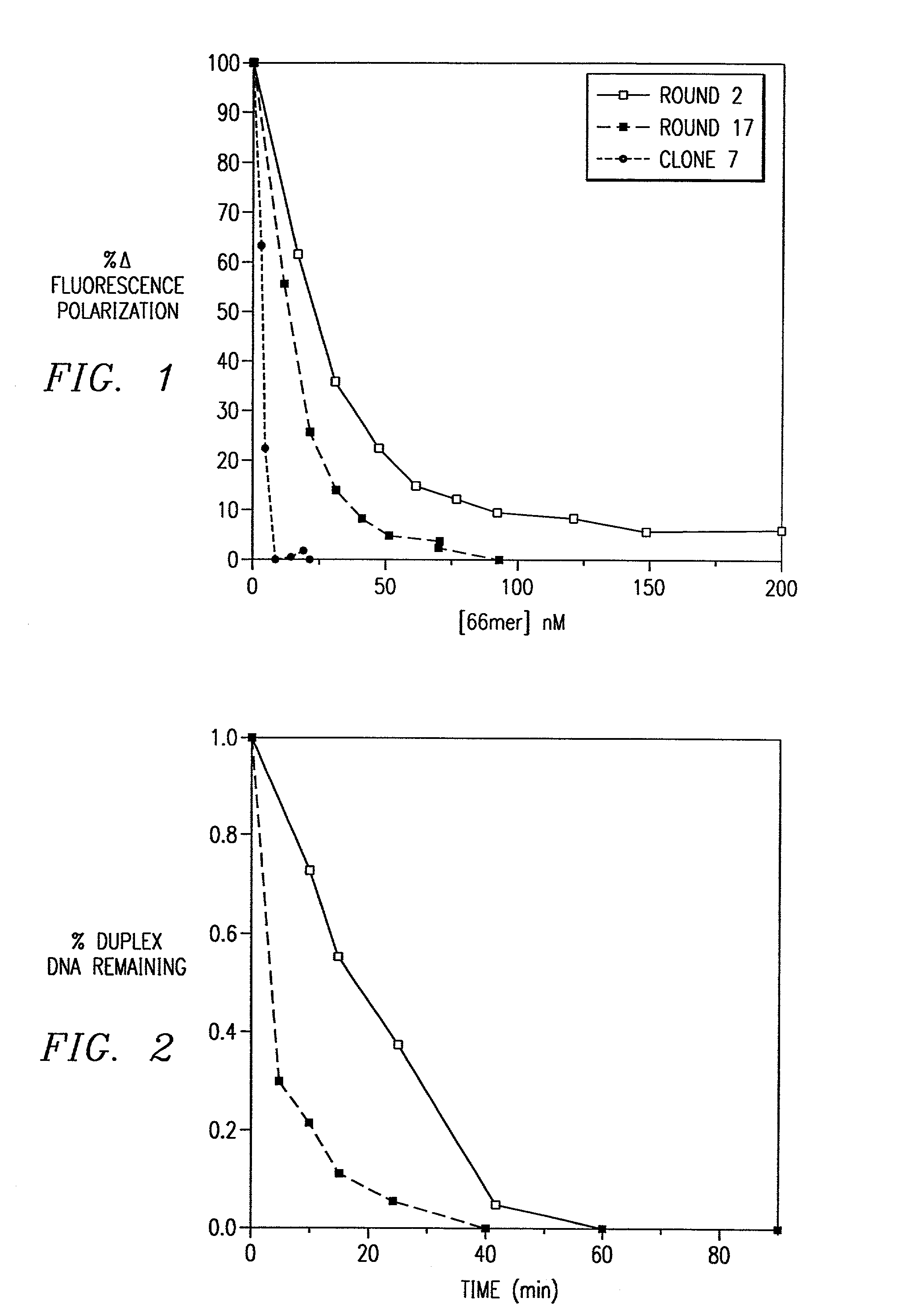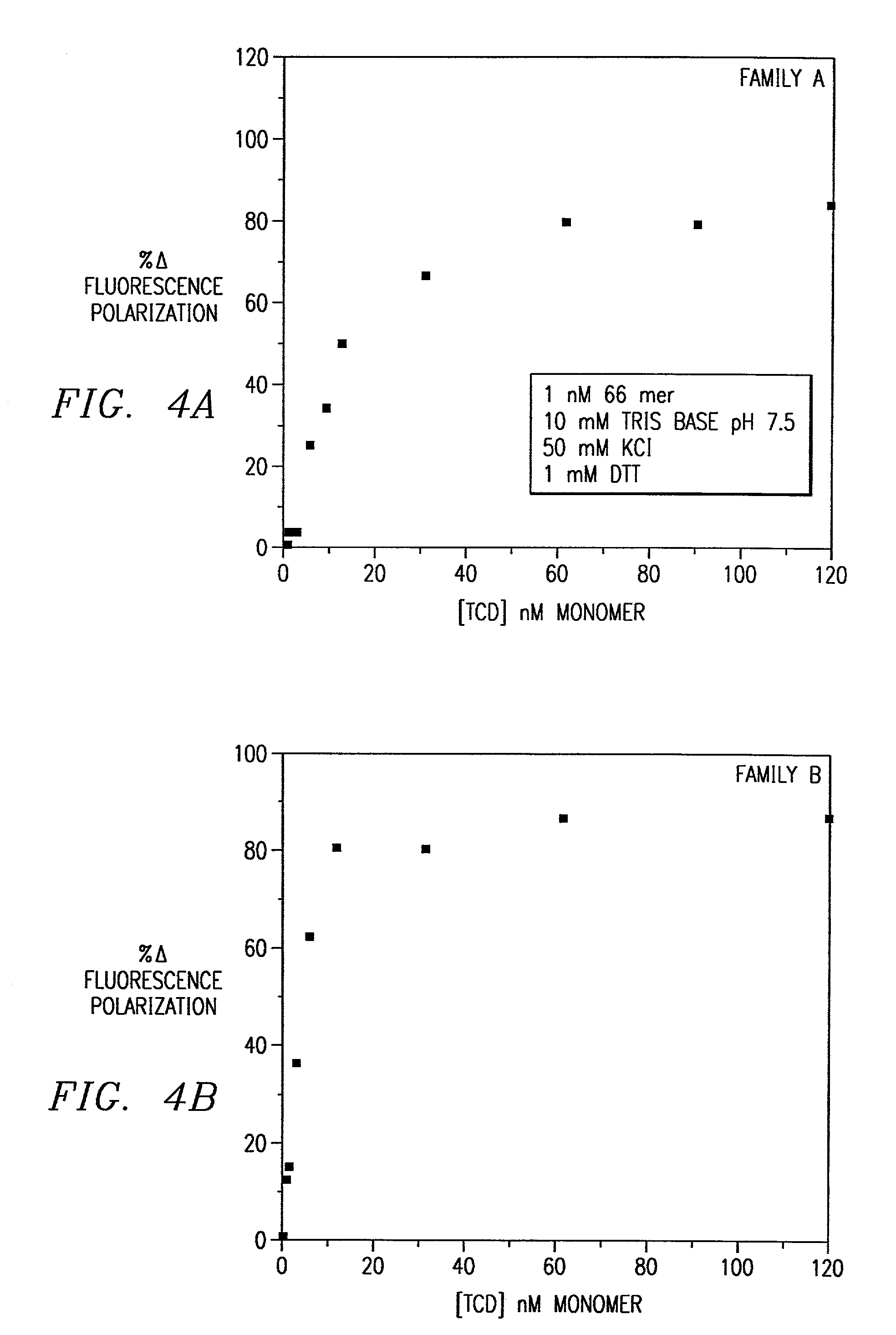Combinatorial selection of oligonucleotide aptamers
a technology of oligonucleotide aptamer and aptamer, which is applied in the field of combinatorial selection of oligonucleotide aptamer, can solve the problems of structural perturbations in the structure of the duplex, stickier oligonucleotide substitutions, etc., and achieve enhanced interaction and reduced nuclease activity.
- Summary
- Abstract
- Description
- Claims
- Application Information
AI Technical Summary
Benefits of technology
Problems solved by technology
Method used
Image
Examples
example 1
Thioselection of Phosphorodithioate Aptamers Binding to NF-IL6
[0076]The present invention provides oligonucleotide combinatorial methods that may be extended to selection not only of base sequence but of phosphate (or monothiophosphate) backbones as well. The best monothiophosphate aptamers were obtained using the following method. As an example, binding was increased at least 5-fold to the NF-IL6 tryptic core domain (TCD) than the normal backbone sequence. The sequences selected, while related to the normal backbone CAAC / T half-sites (for Family B below), show distinct differences that are likely attributable to alterations in the nature of the protein-phosphate backbone interactions in the complex.
[0077]Because Taq polymerase can use up to 3 different dNTP(αS)s in the polymerization reaction, further backbone substitutions are possible. The present invention contemplates the incorporation of both triphosphate and triphosphate(αS) nucleotides in the PCR mix so that a library of bo...
PUM
| Property | Measurement | Unit |
|---|---|---|
| volume | aaaaa | aaaaa |
| mass | aaaaa | aaaaa |
| dA | aaaaa | aaaaa |
Abstract
Description
Claims
Application Information
 Login to View More
Login to View More - R&D
- Intellectual Property
- Life Sciences
- Materials
- Tech Scout
- Unparalleled Data Quality
- Higher Quality Content
- 60% Fewer Hallucinations
Browse by: Latest US Patents, China's latest patents, Technical Efficacy Thesaurus, Application Domain, Technology Topic, Popular Technical Reports.
© 2025 PatSnap. All rights reserved.Legal|Privacy policy|Modern Slavery Act Transparency Statement|Sitemap|About US| Contact US: help@patsnap.com



